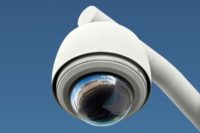The leading physical security market analysts all predict that megapixel cameras will continue to significantly outgrow the standard resolution camera marketplace, with many forecasting this segment to grow over the next three years at better than 40-percent CAGR (compound annual growth rate). With so many new megapixel camera types, and ever-increasing resolutions, it’s seems highly possible that this will occur. However, what isn’t clearly understood are the operational impacts of megapixel cameras and how the rest of the surveillance systems’ product ecosystems will respond. For instance, if over the next three years megapixel cameras grow at this pace, it likely means that the surveillance recording and storage industry will probably grow at an even faster CAGR. Other product categories like lenses, displays and high-end workstations will also likely benefit with faster than normal growth.
NVR Growth
Another interesting impact of the megapixel boom, which seems to be underestimated, is the effect this will have on high-end NVR growth. With much more resolution and perceived value of what is now considered high fidelity, or high-definition video, security operators will want to keep the evidence longer. In the past, the recorded video was of such poor quality that it was less important to keep it for longer lengths of time. Suddenly this has changed, and security operations see the video as a high quality visual asset and are willing to invest in storage and management. In addition, more advanced video search tools that are being developed for security operators, which make searching hours of high-resolution evidence possible in minutes. These factors appear to be key drivers in the NVR market growth.
Security Operational Impacts
With so much market growth and new camera capabilities, enterprise security executives are struggling to keep up with this accelerated rate of change. What used to be common operational practices with standard resolution surveillance has become obsolete. Digital zoom has become the most widely cited feature, which provides usable evidence at distances never before imagined. Due to these megapixel cameras having larger horizontal and vertical resolutions, there are often multiple camera fields of view that are overlapping which can be used to create panoramic camera scenes. This requires special stitching software but gives the illusion of one physical camera. Digital PTZs are replacing mechanical PTZ, with analog-like joystick speed and control. Last, evidence can be gathered faster, with higher confidence because the images are so much clearer. All of these operational impacts are also helping accelerate the megapixel boom.
Better Design and Engineering
When the megapixel boom started in 2007, many new camera manufacturers pioneered a new surveillance design technique called pixels per inch or pixels on target. These mathematical calculations were critical in quantifying the benefits of megapixel cameras over standard resolution security video. These formulas divided the horizontal pixel resolution by the horizontal field of view in feet or inches, creating a single numerical value that could be compared with another picture, to measure and show the design and engineering benefits of megapixel. This has led to significant improvements in the way consultants define system requirements, which are commonly now based upon mathematics instead of experienced guesswork.
Higher Operator Confidence
As quantifiable image quality improves, so does operator confidence. This leads to a reduction in live monitoring requirements. With recorded evidence being so much better than in the past, there is less emphasis placed on live monitoring, and there is a shift towards investigation. This trend is further enabled with surveillance operations covering a wider field of view: operators see the entire crime scene from start to finish. When combined with specialized video export software, an entire incident, captured on several cameras, can be time-sequenced into one video export event. This creates a forensic situational awareness that further accelerates the speed and accuracy of investigations.
Redefining FPS
The megapixel growth boom has also impacted the importance of frames per second because security operators would rather see a single high quality frame than 30 low-quality frames. Further proof that fps requirements are declining is the fact that many of the highest resolution cameras produce less than 10 fps at the highest resolutions, with many of them producing less than five frames per second. This is being further redefined with NVR’s that are able to groom video frames over time, reducing the total storage requirements while enabling the retention times of surveillance footage to be even longer. The facts seem highly visible: megapixel is driving the surveillance industry boom.
About the Columnist:
Keven Marier is the founder and CEO of Connex International, Inc. He has a 20-year background in technology consulting, publishing and educating within the physical security technology and enterprise IT industries.
Read moreSurveillance Strategies online at SecurityMagazine.com/Columns/Surveillance









